


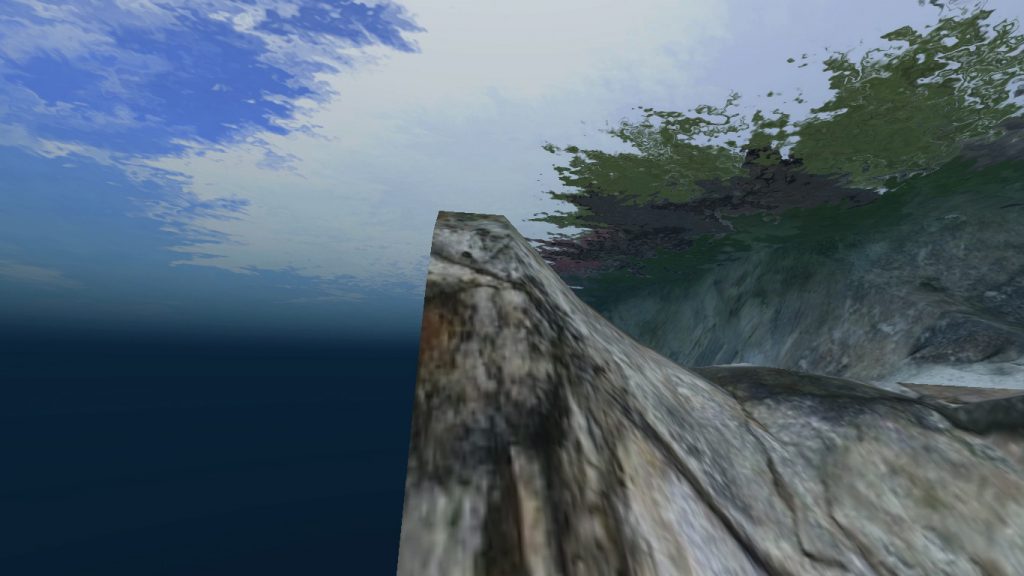
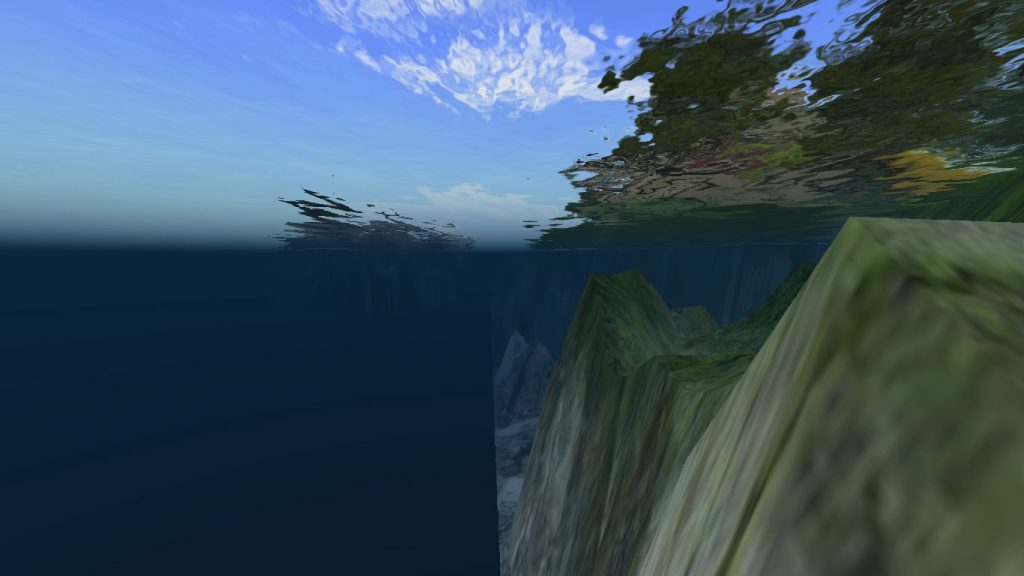
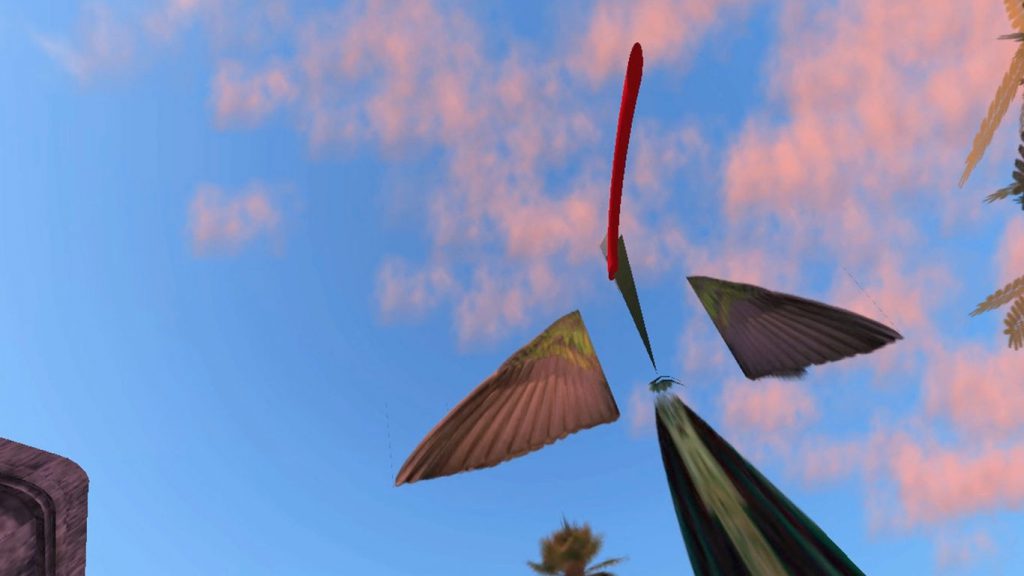


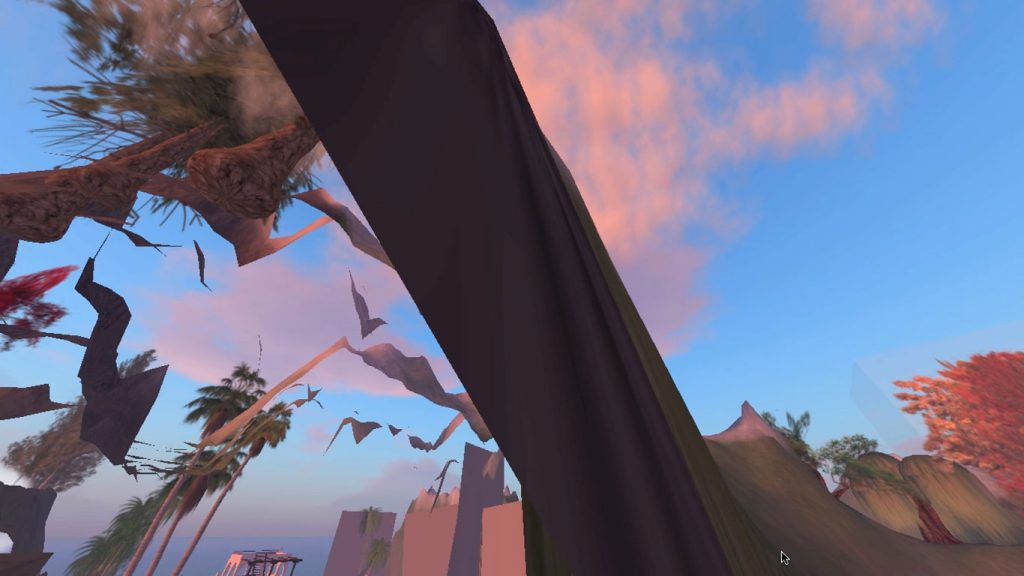

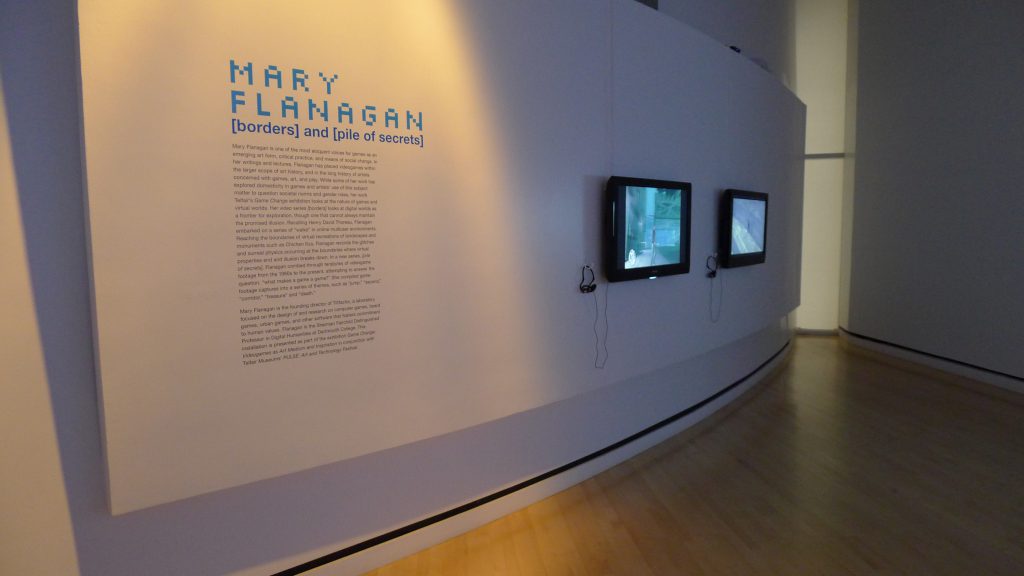
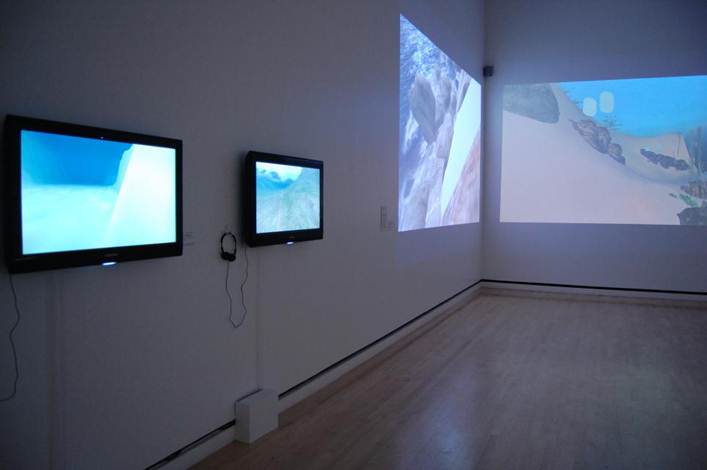
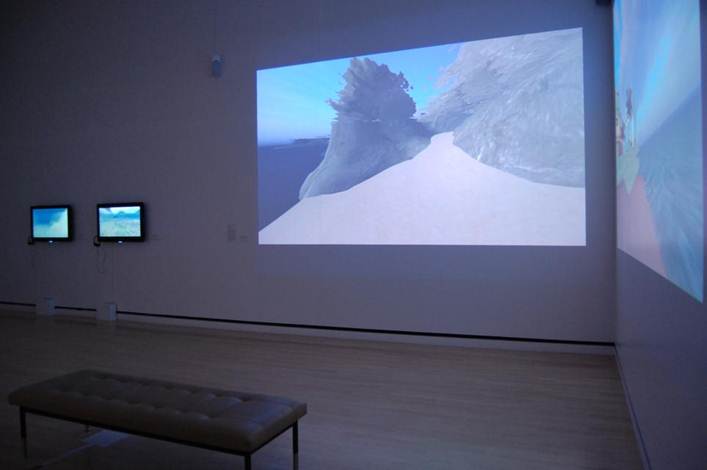

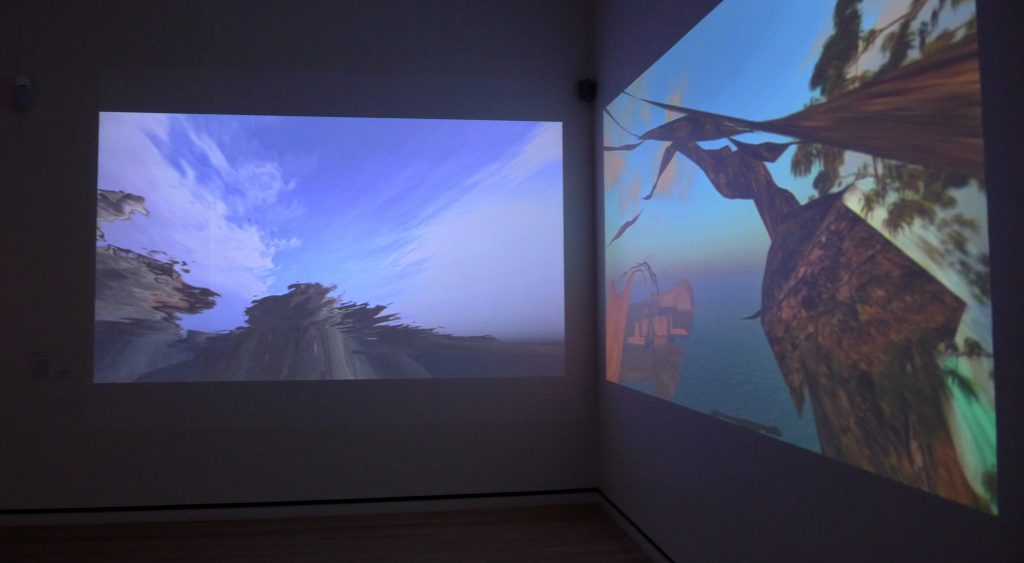
Video
A video excerpt from my walk around Aquitaine Castle in France.
A video excerpt from my walk around the virtual construction of Chichen Itza, a Mayan archaeological site on the Yucatán Peninsula in contemporary Mexico.
Video excerpt from my walk around Villa Almerico-Capra, also known as ‘La Rotonda’, a 16th century manor house and grounds in Vicenza, Italy.
[borders]
Video series, single channel video, projection
dimensions variable
2010
American writer Henry David Thoreau extolled going forth in the world to experience its bounty and characteristics through the simple act of walking. Thoreau avoided highways, choosing instead to wander with indirectness in order to understand the spiritual possibilities of the landscape: “Two or three hours’ walking will carry me to as strange a country as I expect…”
[borders] is video documentation of a series of such walks, conducted virtually in popular, shared online multi-user worlds. The rendered landscapes are beautiful and hypnotic and we are transported directly into Thoreau’s walking shoes, “glimps(ing) Elysium, but only as he walked along, surveying the boundaries and divisions…”
In [borders], walking exposes obscure traits and glitches of the virtual by testing the edges of the virtual recreations–immersive historical recreations of existing sites such as The Great Wall, or Aquitaine Castle, or the pyramids at Giza. Often, they are funded by government agencies. But the simulacrum only goes so far. The properties in the virtual world are no longer places.
In virtual worlds built by thousands of players, there appear to be seamless landscapes as far as the eye can see, appearing to some extent as the “commons” of old. One can find, however, and walk along invisible boundaries of ownership, breaking up the illusion of a cohesive landscape. In following the invisible virtual lines separating one player’s property from another, the walker may become stuck in stones, forced underwater or pushed teetering at the edge of the world. These unmarked edges expose the algorithmic nature of landscape and render futile the act of walking.
Included in the series:
[borders: aquitaine]
[borders: chinchen itza]
[borders: giza]
[borders: patheon]
[borders: glengarry]
[borders: great wall]
[borders: la rocca]
Exhibitions
Solo Exhibitions
- Telfair Museum, Savannah, Georgia, February 2012
Group Exhibitions
- “Access Kafka,” Jewish Museum Berlin, December 13 2024, curated by Shelley Harten
- Playmode, MAAT | Museu de Arte, Arquitectura e Tecnologia, Museum of Art, Architecture and Technology, Lisbon, Portugal, October 2019
- New Art Fest +18, Lisbon, Portugal, November 9 – 30 2018
- Im Spielrausch: Von Drachentötern, Königinnen und Pixelmonstern (Intoxicating Play: Of dragon slayers, queens and pixel monsters), Museum of Fine Arts Cologne (MAKK), Cologne, Germany, August 19 2017 – February 4 2018
- ART GAMES DEMO #4, Frontières et Migration aux Subsistances à Lyon, Lyon, France, December 2017
- PLAYGROUNDS, Redline Collective, Denver, Colorado, July 2015
- FILE Machinima in FILE 2014 – Electronic Language International Festival, FIESP Cultural Center, São Paulo, Brazil, August 25 – October 5 2014;
- Digital Zoo exhibition UK (Touring 5 cities) including London, Sunderland, and Leeds, UK, February – July 2014
- Media Arts Dortmund, Cologne, Germany, 2013
- Machinigglitch, ARCADE, Festival Gamerz 9, Aix-en-Provence, France, 2013
- Up Up Down Down Left Right, Spaces Gallery, Cleveland, Ohio, May 1 – July 19 2013
- Conflux Festival, NYU Gallery, New York, New York, October 2012
- World Wild Web, Furtherfield Gallery, London, UK, October 2012
- Maryland Institute College of Art, Baltimore, Maryland, March 2011
- Computational Thinking in Existing Art Forms, Writing Machine Collective, Youth Square, Hong Kong, January 2011
- SIMULTAN #6 ‘Past Continuous. Future Perfect’, Timisoara, Romania, September 30 – October 2 2010
- Future Selves, Big Screen Project, New York, New York, 2010
Press
Bonar, Aliya. “Participant Interview: Mary Flanagan.” Conflux Festival, October 2012.